Washington, D.C. The Senate passed a $1.2 trillion bipartisan infrastructure package yesterday and, early this morning, the Senate approved its $3.5 trillion 2022 budget resolution for physical and human infrastructure investments.
In response, SMART issued the following statement:
“Together, the bipartisan infrastructure legislation and budget resolution represent a historic opportunity for millions of Americans by making the largest infrastructure investment in almost a century. This infrastructure package is a blue-collar blueprint that has the potential to create a generation of good-paying middle class union jobs and boost economic growth because it invests in long overdue projects, technological advancements and rewards work, not wealth. This historic investment has the potential to expand clean energy infrastructure, improve indoor air quality in our schools, housing and public buildings, expand public transportation and rail systems, and better protect our bus and transit members from assaults.
While we appreciate the vision, determination and collaboration of the Biden administration and lawmakers on the bipartisan legislation, we still have work to do to resolve outstanding issues and strengthen this legislation. As the package moves forward, SMART is committed to working with Congress and the Biden administration to ensure that robust funding for school construction, labor standards reflected in the PRO Act, and adequate rail safety provisions (such as those incorporated into the House’s INVEST Act) are included and applied to all aspects of the legislation to truly create millions of good union jobs and deliver on the build back better agenda.”
Author: paul
SMART Sheet Metal Business Managers Dante Dano (SM Local 137) and Eric Meslin (SM Local 28) are teaming up with GCA-505 Long Island Rail Road General Chairperson Anthony Simon to plan an annual golf outing in Bronx, N.Y. to benefit LaborPress.
LaborPress is one of the largest labor news organizations in the nation. They were founded in August 2009 by LaborPress President Neal Tepel to provide a media outlet for unions and workers. Their articles regularly appear in the New York Daily News and on their website. iHeart radio’s WOR radio station features their daily reports.
LaborPress.org regularly has features on the transportation and building trades industries, which is why our union is happy to help them out with their golf outing. Most notably, LaborPress recently posted spotlight features on Simon, Dano, Meslin and General President Joe Sellers.
The keynote speaker for the event is none other than SMART General President Sellers. During his lunchtime speech, Sellers plans to discuss infrastructure issues important to both the transportation and sheet metal sides of the union, as well as the need for more unionized workers in the workforce. Also speaking during the event are representatives from the AFL-CIO and the North America’s Building Trades Union (NABTU). Legislators are expected to attend as well.
“We are honored to have our general president attend this event as the keynote speaker. This event takes place in New York, where many labor leaders throughout the state will join us to hear Joe’s opinions on the labor movement and the infrastructure bills that we are fighting for in Washington,” Mesline said said. Dano added that “this event shows that when we all stand together with both transportation and building trades, our voices and actions are stronger than ever.”
The golf outing is being held Sept. 10, at the Pelham Bay Golf Course, 870 Shore Rd., Bronx, NY 10464.
Click here for a flyer with more information on costs and contacts.

Today’s actions represent the most robust and aggressive changes to the Buy America Act in decades and serve as an important step toward ensuring the full purchasing power of the federal government is leveraged towards supporting domestic production, union jobs and the national security of the United States.
The Biden Administration’s serious effort go beyond words and act on its priorities will grow the industries of the future to support U.S. workers, communities, and emerging industries. These actions include not only plans to increase competitiveness, but also include billions of dollars in new purchases to support the manufacturing of new technologies and products in America. New investments in workforce training and registered apprenticeship will further enhance opportunity for current and future generations of Americans to ensure American workers continue to lead the way well into the 21st century.
White House Fact Sheet (7/28/2021)
The 2019 Convention was a momentous one in SMART’s history. For the first time, we looked at the way we treat our fellow brothers and sisters and the impact it has on our industries’ growth. We changed the language of our Constitution to make it more inclusive. Both our proclamations and adding language about conduct that is harassing, hazing, bullying or discriminating as chargeable offenses under Article 17 shows SMART’s desire to have a safe and welcoming environment for all members.
The “I GOT YOUR BACK” campaign gives every member the opportunity to show individual and collective commitment to protect our sisters and brothers and live up to the ideals of union solidarity. It is our commitment to demonstrate through our behavior that all SMART members belong and have a right to a safe working environment free from harassment, hazing, bullying and discrimination, so we can confidently say to our sisters and brothers, “I GOT YOUR BACK.”
The campaign also promotes a safe haven among all members of SMART. It is based on awareness of work environment discrimination, bullying, hazing and harassment. Do you have that special mentor who had your back? Now is the time to let them know how their support impacted you and recognize them for their solidarity. Wearing your “I GOT YOUR BACK” sticker symbolizes that YOU will have all other members’ backs. It lets a member who is need of an ally know he or she has a safe place to turn.
Let’s make and be the difference!!!!
Who has been an ally to you?
I could never thank Ed Marciniak enough for having my back. Ed was the first person I met from SMART 265 and it changed my life. Ed was the person who convinced me to go to my first union event. He told me about all of the union benefits, but that wasn’t the only thing that got me hooked. Ed has this attachment with the union that made me feel like I had found my second family. He has an open-door policy. When I need anything, he has my back.
I have been a bus driver for 26 years. It’s a very challenging job, but it’s also very rewarding. Parents depend on you, the schools depend on you and, of course, your boss depends on you. Because if you don’t show up, there’s no one to drive that bus. You have some of your kids for years, and you see them grow into different types of people. You get attached to the kids, especially if you’ve been doing it long enough. And they get to know you. You’ll see them as a little child, and you see them when they’re graduating high school and it’s great. And then you bump into them years later and they still remember you.
“Sometimes the managers try to belittle people and you’d be surprised at the women who will come up and say something, or the men will come up and say ‘Hey, look, it doesn’t go like that.’ ”
There have been many times when, inside the terminals, you have a heated argument going on with a manager or with one of the drivers and if you go in and say something, a lot of the other drivers will stick up and go in and help out. Sometimes the managers try to belittle people and you’d be surprised at the women who will come up and say something, or the men will come up and say “Hey, look, it doesn’t go like that.” You do get support from other members. A lot of them understand and a lot of them know what’s going on and they try to help you out and they do got your back. They’ll have your back and they’ll explain to people what’s going on.
I wouldn’t want to be anything else but be in the SMART union, or in any union, because you have no protection once that’s not around.
Being a former military member, the phrase “I got your back” is music to my ears. After serving four years in the Marine Corps, I didn’t think that I would be part of an organization that embraced that motto. To me, it isn’t just a motto. It’s a mindset and an attitude. When organizations bring that into the workforce, positive things will happen. I am proud that “I got your back” is something we are talking about and practicing on the job site.
When asked about who has been an ally to me, who has had my back, and who has been influential in my short time as a tinner, I didn’t have to think very hard. I was lucky enough to know this person before I even started my apprenticeship. This tinner’s name is Dave St. Peter. He has got to be one of the smartest and most hard-working members I’ve had the privilege of knowing. Having a prior union friendship helped me to be more comfortable opening up and asking him questions for mentoring. This eventually unfolded into him being the person I went to for most work advice, job site leadership advice, etc. As the old saying goes, “One of the keys to success is surrounding yourself with successful people.” That couldn’t be more true than Dave’s magnetic pull he seems to have on those he has encountered. Dave is, and has been, a full-time instructor at the hall for many years. I couldn’t think of a more fitting place for him to be. It is because of him, and others like him, that bring true meaning to the phrase “I got your back.”
There are a lot more women, I think, on the production side that work in the shops than there are on the building trades side. However, you still face the same issues. You still have the majority of men that you’re working with, you still have discrimination, sexual harassment issues, maternity leave issues, those sort of things. So, we’re kind of intertwining both sides, the production and the building trades side and tackling the issues together.
I’ve seen a lot more men who know that the workforce is short right now and that’s a way to fill the void, and they are stepping up for women. And I think I’m seeing more unity as far as a union, everybody joining together.
“I’ve seen a lot more men who know that the workforce is short right now and that’s a way to fill the void, and they are stepping up for women.”
Today, we have more women applying for work in our industry. They all had the mentality that it was a men’s trade, strictly a man’s trade. And now, with the SMART Women’s Committee and the women’s representatives, we are getting the word out there, and there are more women getting involved. They see an opportunity there. It’s a good career.
One of the production shops at Local 24 had one woman when I started three and a half years ago, and they have several now. I’ve been working with the JATC coordinators in Local 24. Of course, we couldn’t do anything all last year because of COVID, but we’re planning on setting up at local job fairs. It just seems like when you’re at a job fair, especially at some of these vocational and high schools, you’re going to have more young women come up to the table to speak if they see a woman standing at the table. So, we’re doing that and I’m going to attend job fairs that way with the JATC coordinators and try to get more women recruited.
I GOT YOUR BACK CAMPAIGN:
INSTRUCTIONS ON HOW TO TAKE PART
- Once you participate, you are letting other members know they have an ally to turn to in times of need.
- Wearing or displaying your “I GOT YOUR BACK” sticker symbolizes that YOU will have ALL members’ backs.
- We’re asking all members to step up, stand up for each other and continue mentoring to everyone’s benefit.
- For example, apprentices who receive support are twice as likely to complete their apprenticeship and remain
employed than if they do not. New workers in the transportation industry need guidance as well. Remember, the
future of our industries relies on them and they are your sisters and brothers.
- Members can give a sticker, that will be distributed through local unions, to someone in their trade who has stuck up for
them, or has had their back. They can also take a picture with that person. - Post the picture, along with a short description of how that person had their back, to social media with the hashtag
#SMARTIGOTYOURBACK or email it to mentors@smart-union.org.
These stories will be showcased by SMART via video, social media, print and other outlets as they become available.
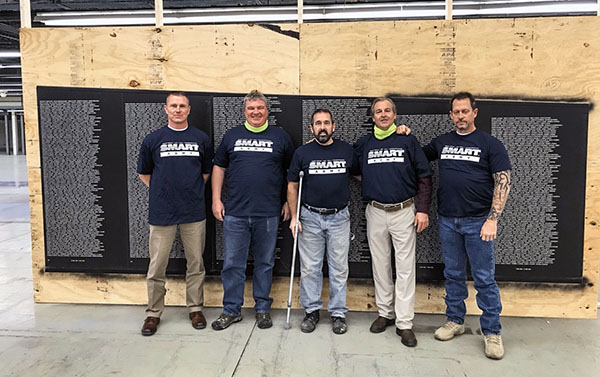 With 1,534 of the 58,320 names inscribed on its black anodized aluminum surface representing fallen heroes from Indiana, the new Vietnam Veterans’ Healing Wall at the Veterans National Memorial Shrine and Museum in Fort Wayne, Ind., has a special meaning for veterans in that state, while paying tribute to everyone who made the ultimate sacrifice for their country.
With 1,534 of the 58,320 names inscribed on its black anodized aluminum surface representing fallen heroes from Indiana, the new Vietnam Veterans’ Healing Wall at the Veterans National Memorial Shrine and Museum in Fort Wayne, Ind., has a special meaning for veterans in that state, while paying tribute to everyone who made the ultimate sacrifice for their country.It is also a source of pride for SMACNA member Morris Sheet Metal Corp. and the Local 20 Fort Wayne SMART Army, which pooled resources to turn this long-awaited project into reality.
“It first came on our radar in December 2020, when it was announced that a replica of the wall would be erected in Fort Wayne,” said Darryl Esterline, business representative for SMART SM Local 20. “Given the importance of the project to so many families, we told the organizers that the SMART Army would volunteer our services to honor our fallen heroes.”
“Given the importance of the project to so many families, we told the organizers that the SMART Army would volunteer our services to honor our fallen heroes.”
– SMART SM Local Business Representative Darryl Esterline
The Healing Wall is a replica of the actual Vietnam Wall in Washington, D.C., and is 80% the size of the original. It stands 8 feet tall, is 360 feet long and is made up of 72 panels. The arrangement of the wall is such that the names of service members who lost their lives are in a ‘V’ configuration, with the 8-foot panels in the middle of the ‘V’ tapering down to the smallest on the ends, which are just 2 feet tall.
The wall toured the country for a decade, and public donations enabled the shrine in Indiana to purchase the panels last December, at which point they were put into storage while concrete footers, support structuring for the wall and surrounding grounds were prepared to receive the panels.
The remaining challenge was overcome thanks to Local 20’s essential contribution — a system that would fix the panels to the concrete firmly, but without undue visual clutter.
Morris Sheet Metal provided CAD drawings and sample mockups, followed by approval of the fasteners and shop fabrication. In addition to the fasteners not being visible, the panels were set slightly away from the concrete, allowing for seasonal expansion and contraction.
The Local 20 SMART Army came up with an innovative way to ensure the system worked.
“We created a prototype by building our own panels and test mounting them on a plywood wall,” Esterline said. “That way, we avoided any potential damage to the real panels, and on-site installation would be that much easier.”
“We were able to complete the project in advance of Veterans’ Day, and the unveiling ceremony took place on May 29,” Esterline added. “If there was a single image that made our efforts worthwhile, it was that of Fort Wayne Commander Greg Bedford of the Veterans’ National Memorial Shrine and Museum. He watched as we hung the first panel on site, and tears rolled down his cheeks.”
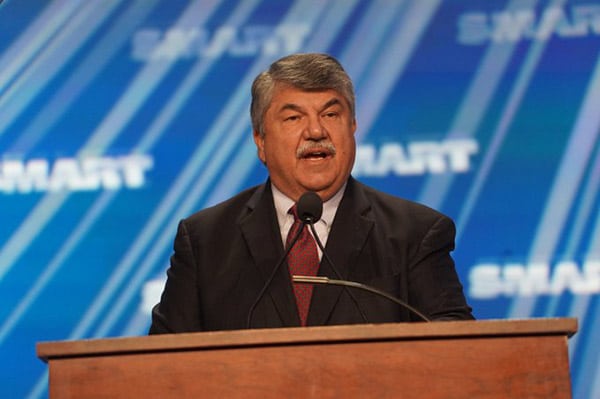
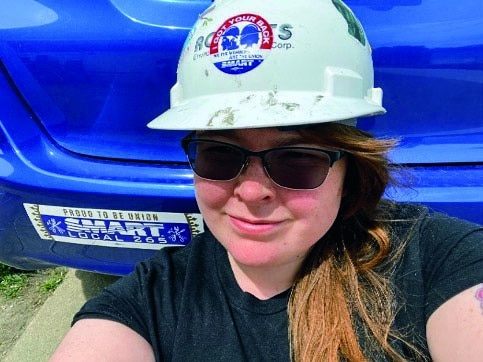
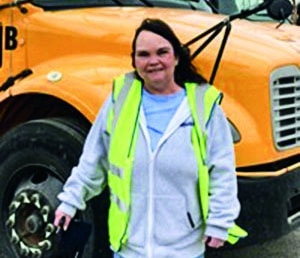
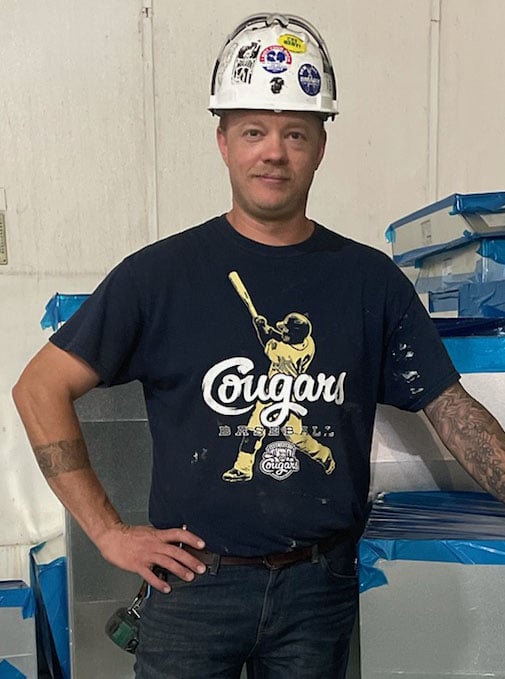
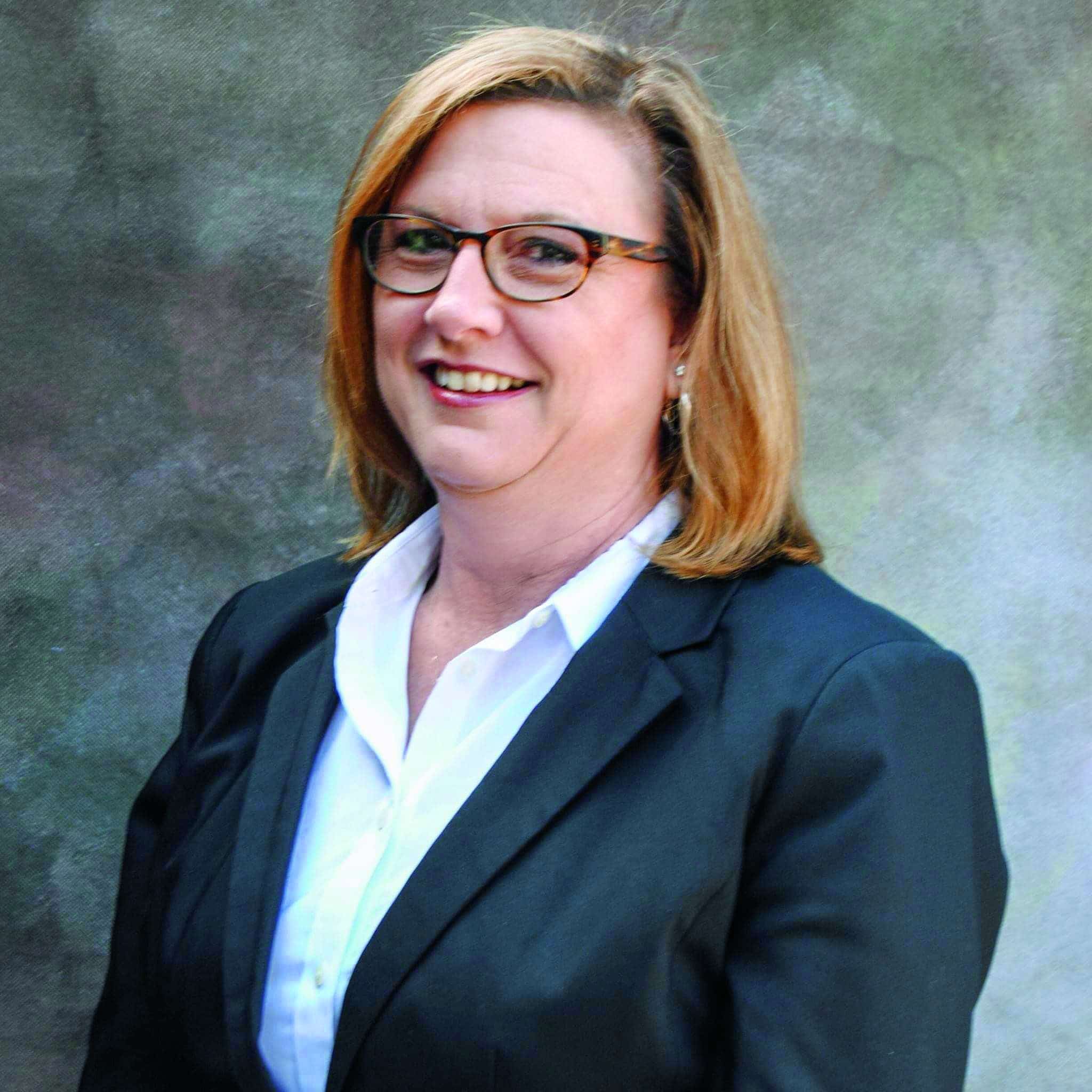
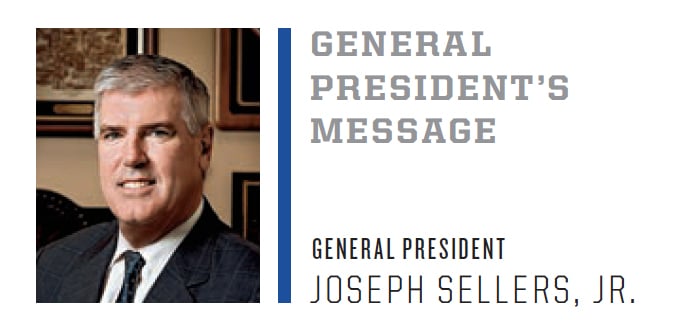

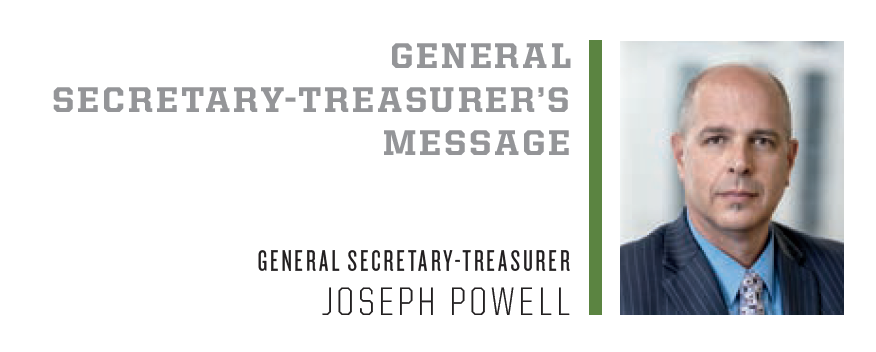

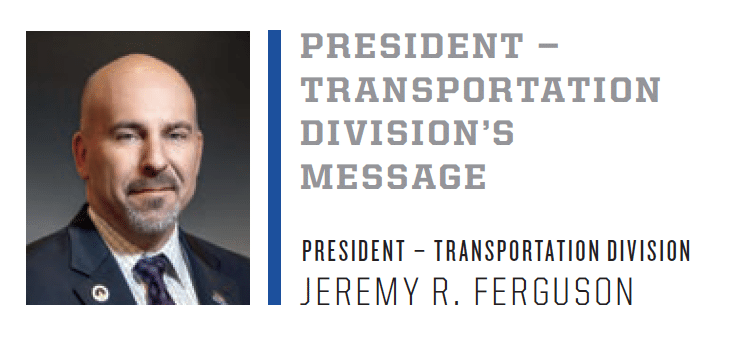

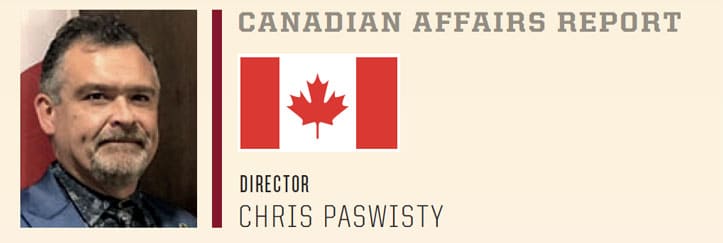
 The CBTU has taken its own first steps down the path to reconciliation. As part of the CBTU’s “Building Together” program, Virtual Indigenous Training has been developed to help increase awareness of Indigenous peoples and their culture. Since its launch, hundreds of union leaders across the country have taken the training. SMART’s leadership is committed to promoting this training, as well as honouring the findings of the Truth and Reconciliation Commission reports. We remain steadfast in our commitment to building a better Canada with our Indigenous brothers and sisters.
The CBTU has taken its own first steps down the path to reconciliation. As part of the CBTU’s “Building Together” program, Virtual Indigenous Training has been developed to help increase awareness of Indigenous peoples and their culture. Since its launch, hundreds of union leaders across the country have taken the training. SMART’s leadership is committed to promoting this training, as well as honouring the findings of the Truth and Reconciliation Commission reports. We remain steadfast in our commitment to building a better Canada with our Indigenous brothers and sisters.